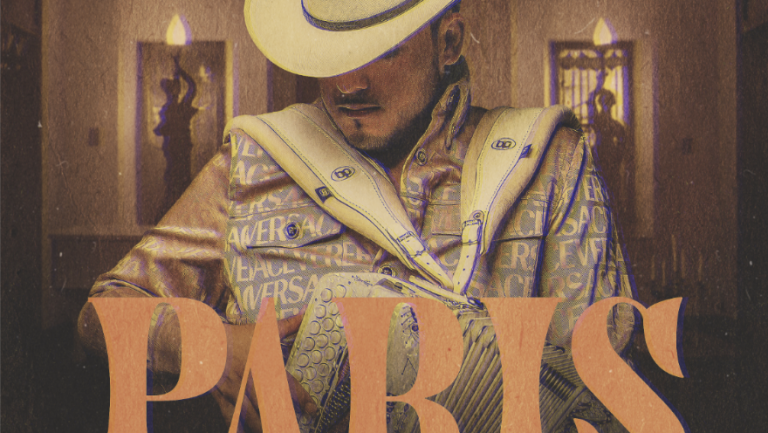By Gustavo Martir M.A. – Senior Staff Writer | Vanessa Torres – Editor |
Photography Curated By Maritza Pabón
The rhythm of cumbia is a force of nature. Born from the cultural crossroads of Colombia, its infectious pulse has journeyed across continents and generations, finding a second, vibrant home in the heart of Mexico. For nearly three decades, no one has championed this sound with more passion, innovation, and familial heart than Grupo Cañaveral de Humberto Pabón.
Now, with their monumental new album, Tributo A Una Leyenda Humberto Pabón (Vol. 1), the group isn’t just celebrating a legacy but actively reinventing it. This is the story of a musical dynasty, a tribute to a living legend, and the sonic alchemy that transforms timeless classics into the soundtrack of tomorrow.

The Man Who Built the Dynasty: Humberto Pabón
Every great dynasty has its architect. For the cumbia empire in Mexico, that architect is Humberto Pabón Olivares. His story doesn’t begin in the grand halls of Mexico City, but in the neighborhoods of Colombia, where as a boy of just ten, he formed his first cumbia group, “Los Cumbiamberitos”. That early, profound connection to “pura cumbia” would become the foundation for a lifetime of musical innovation.
His journey took a pivotal turn during his 12-year tenure as a timbales player for the legendary tropical music group, Los Corraleros de Majagual. It was with them that he honed his craft and, in 1973, first arrived in Mexico—a country he would soon call home. Deeply moved by the culture, he eventually became a naturalized Mexican citizen, beginning the transformative process of weaving the rhythms of his homeland into the fabric of his new one.
Rescuing the Rhythm: The Founding of Cañaveral
By 1995, Humberto Pabón felt a driving mission: to “rescue the authentic flavor of cumbia in Mexico”. In January of that year, alongside journalist Agustín Teutli Delgado, he founded Grupo Cañaveral. From the very beginning, they were different. Pabón made a landmark innovation by introducing the tambor alegre, a traditional Colombian drum, into the instrumentation of a Mexican cumbia group for the first time. This wasn’t just a new instrument; it was the group’s rhythmic heartbeat, a sonic signature that blended raw authenticity with a fresh, powerful energy.
Success was not just swift—it was explosive. Their first three songs, released on a compilation album, earned immediate acclaim, leading to a full record contract. By 1998, they had already earned three gold records, powered by enduring hits like “Tiene Espinas El Rosal” and “No Te Voy a Perdonar”. Grupo Cañaveral had arrived, and the sound of cumbia in Mexico would never be the same.
A Living Homage: Tributo A Una Leyenda
On May 30, 2025, Grupo Cañaveral released Tributo A Una Leyenda Humberto Pabón (Vol. 1), a project that is both a look back and a powerful leap forward. The inspiration, Emir explains, is born from the sheer magnitude of his father’s career. “The desire to do this comes from the number of years my dad has been in the industry; we’re talking more than 65 years,” he says. “Of the 32 songs that will be split into Volume 1 and Volume 2, my dad had something to do with every single one—as a producer, director, creator, or the one who assembled the group”.
This is not a museum piece; it is a living, breathing celebration. The album revitalizes creations central to the Pabón universe, with Emir aiming to give back “a little bit of everything that he has given with so much love, not only to us as the Pabón family, but to so, so many people”.

A Living Homage: Tributo A Una Leyenda
On May 30, 2025, Grupo Cañaveral released Tributo A Una Leyenda Humberto Pabón (Vol. 1), a project that is both a look back and a powerful leap forward. The inspiration, Emir explains, is born from the sheer magnitude of his father’s career. “The desire to do this comes from the number of years my dad has been in the industry; we’re talking more than 65 years,” he says. “Of the 32 songs that will be split into Volume 1 and Volume 2, my dad had something to do with every single one—as a producer, director, creator, or the one who assembled the group”.
This is not a museum piece; it is a living, breathing celebration. The album revitalizes creations central to the Pabón universe, with Emir aiming to give back “a little bit of everything that he has given with so much love, not only to us as the Pabón family, but to so, so many people”.
The Alchemical Formula: A Fusion of Worlds
A key element of the tribute’s magic lies in its stunning roster of guest artists. The album is a vibrant dialogue between musical worlds, pairing cumbia classics with icons from rock, pop, regional, and urban music. This is sonic alchemy in its purest form. The iconic rock anthem “Triste Canción” is reimagined with its original creators, Alex Lora and El Tri. The 1960s cumbia standard “La Pava Congona” is fused with the contemporary flow of Mexican rapper Gera MX —a fitting choice, as Humberto was the producer for the song’s original artist, Andrés Landero.
The pop ballad classic “Te Aprovechas De Mí” finds a new voice with superstar Yuri, with Emir noting his father had already recorded the track back in 1987 with a group called El Combo Nuevo. Creating a visual album was just as important. “Today we are in an era where everything is digital, everything is visual,” Emir states, adding, “Within the tropical genre in Mexico, Cañaveral has been a pioneer of that audiovisual synergy”.
The Pabón Dynasty: A Legacy Continued
For Humberto Pabón, music and family are inextricably linked. He has always viewed his work as a legacy for his children, a philosophy embodied by Grupo Cañaveral itself. Today, Emir Pabón stands as a leader in his own right, co-piloting the group and serving as the primary producer and creative force behind the new tribute album.
This “Pabón dynasty” is the group’s driving force, allowing them to blend generational perspectives and adapt with the times. For Emir, the album is the ultimate gesture of gratitude. “It’s a ‘thank you’ on behalf of a massive percentage of the public, of people, being grateful for everything that has happened over the years with my father,” he explains. The goal is to provide his father with that “apapacho” (a loving embrace), that memory, and that gratitude, while also giving the public that same memory through a modern 2025 sound and production.









